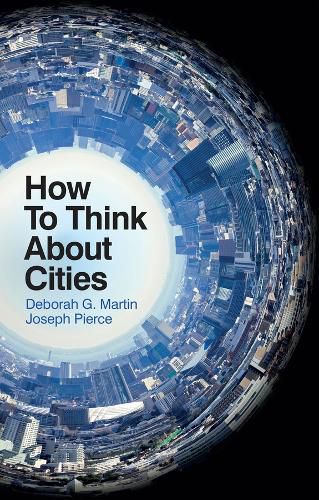Readings Newsletter
Become a Readings Member to make your shopping experience even easier.
Sign in or sign up for free!
You’re not far away from qualifying for FREE standard shipping within Australia
You’ve qualified for FREE standard shipping within Australia
The cart is loading…






Cities are raucous, cacophonous, and complex. Many dimensions of life play out and conflict across cities’ intricate landscapes, be they political, cultural, economic, or social. Urban policymakers and analysts often attempt to
cut through the noise
of urban disagreement by emphasizing a dominant lens for understanding the key, central logic of the city. How to Think About Cities sees this tendency to selective vision as misleading and ultimately unjust: cities are many things at once to different people and communities.
This book describes the various ways of seeing the functions and landscapes of the city as place-frames, and the constant process of negotiating which place-frames best explain the city as place-making. Martin and Pierce call for an explicitly hybrid perspective that shifts between many different frames for making sense of cities. This approach highlights how any given stance opens up some lines of inquiry and understanding while closing off others. Thinking of cities as sites of contested perspectives promotes a synthetic approach to urban analysis that emphasizes difference and political possibility.
This mosaic view of the city will be a welcome read for those within urban studies, geography, and social sciences exploring the many faces of urban life.
$9.00 standard shipping within Australia
FREE standard shipping within Australia for orders over $100.00
Express & International shipping calculated at checkout
Cities are raucous, cacophonous, and complex. Many dimensions of life play out and conflict across cities’ intricate landscapes, be they political, cultural, economic, or social. Urban policymakers and analysts often attempt to
cut through the noise
of urban disagreement by emphasizing a dominant lens for understanding the key, central logic of the city. How to Think About Cities sees this tendency to selective vision as misleading and ultimately unjust: cities are many things at once to different people and communities.
This book describes the various ways of seeing the functions and landscapes of the city as place-frames, and the constant process of negotiating which place-frames best explain the city as place-making. Martin and Pierce call for an explicitly hybrid perspective that shifts between many different frames for making sense of cities. This approach highlights how any given stance opens up some lines of inquiry and understanding while closing off others. Thinking of cities as sites of contested perspectives promotes a synthetic approach to urban analysis that emphasizes difference and political possibility.
This mosaic view of the city will be a welcome read for those within urban studies, geography, and social sciences exploring the many faces of urban life.